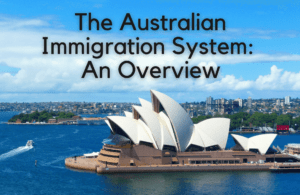Student Visa Caps: Since Education Minister Jason Clare declared his intention to do so, the rationale behind introducing legislation to enable student caps has been confusing for many. This has been clarified by the most recent announcement regarding the student limit level.
The Department of Education’s international education area (Australian Education International or AEI) primary goal is to expand the industry, optimize export and tuition revenue, and increase the number of industry employees. This is prominently displayed on the AEI website.
Therefore, why would the Minister of Education wish to implement a policy instrument that is both controversial and inadequate and that appears to be intended to restrict the expansion of the industry to which his department is dedicated?
Why is it necessary to engage in a significant dispute with each provider annually? Why provoke the ire of the industry’s most influential leaders, who can enlist the assistance of various other influential individuals?
It is now evident that the aggregate level of the caps is remarkably high. The headwear serves two purposes.
The initial step is to gain control over the number of students from the Department of Immigration. This power conflict has been ongoing since the mid-1980s.
Education believes that Immigration is restricting the expansion of the industry it is dedicated to expanding. In contrast, Immigration believes that Education is indifferent to the quality of education provided, the potential for students to secure skilled employment, and the possibility of many students remaining in immigration limbo. This issue is the responsibility of Immigration, not Education.
Secondly, the caps will allow the education sector to expand significantly faster than it would have if the current visa processing parameters had been maintained.
Consequently, Jason Clare has requested that the Immigration Minister’s Direction 107 on risk rating providers be repealed once the limits have been implemented. The limits aim to increase the total number of students, not to decrease them.
The outcome of the dispute regarding student visa processing arrangements will be paramount. Jason Clare will request that Immigration remove itself from the situation and allow each provider to enroll the students, which the limits allow.
In the 1980s, former Education Minister John Dawkins demanded control over student visas and was effectively granted it. However, this was short-lived, as Immigration Minister Robert Ray demanded that his department control student visas again following an overstay incident.
Two issues plague in Student Visa Caps over student numbers
Initially, the government’s net migration forecasts were not of interest to the field of education. Immigration is responsible for identifying alternative methods to deliver the forecasts, as they are not the responsibility of Education. However, Immigration may perceive the forecasts as Treasury’s, not theirs.
Secondly, Education has no interest in reducing the number of students who are stranded in immigration limbo (for instance, approximately 240,000 temporary graduates are currently in Australia, and a significant number of them will face difficulty in obtaining permanent residency) or in applying for asylum (the number of asylum seekers in Australia continues to increase, particularly those who have been rejected at both the primary and AAT stages).
Those are issues related to immigration, not education.
The outcome of this struggle over the next few months, along with the upcoming federal election, will influence the future scale and nature of one of Australia’s largest industries.
However, one thing is evident, and the media consistently disregarded it because of the hysteria propagated by the various International Education advocacy groups.
The number of students and transient graduates in Australia will be significantly higher than in 12 months (September 2025). The current population of Australia is approximately 800,000 overseas students, including those in the bridging visa backlog, and approximately 240,000 transient graduates (including those in the bridging visa backlog).
The number of international students in Australia may approach 900,000 if the announced student limits are met. If the current offshore student visa application and grant rates persist, the number may be closer to 850,000. The rate of student completion and departure will determine this.
The financial catastrophe that the industry complains about is hardly a catastrophe.
The number of temporary grads may get close to 300,000. The Department of Immigration will be concerned about that figure, but the Department of Education will not be affected by it, as it is not their responsibility.
These temporary graduates will increasingly seek asylum as their visas expire, as they cannot return to a student visa. Once more, the Department of Education is not responsible for this issue.
It will also indicate that net overseas migration stays at the same rate the Treasury has anticipated.



